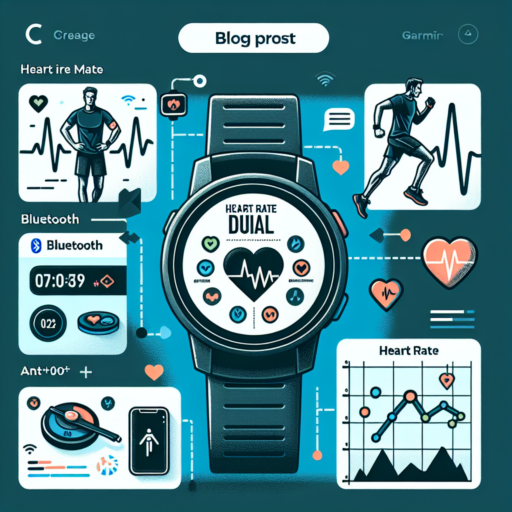How long does Garmin HRM Dual last?
Understanding the longevity of the Garmin HRM Dual is crucial for athletes and fitness enthusiasts who rely on accurate heart rate data to optimize their training. The Garmin HRM Dual is designed with durability and extended usage in mind. Its battery life is one of its standout features, providing users with the assurance of long-term reliability.
The Garmin HRM Dual features a user-replaceable CR2032 battery, which is easily accessible and widely available. This coin cell battery is specifically chosen for its long lifespan, offering users approximately 3.5 years of service, assuming average use of about 1 hour per day. This estimate may vary depending on usage patterns, with more frequent and intense sessions potentially reducing overall battery life slightly.
Battery replacement is a straightforward process, designed to be user-friendly and ensure that you can quickly return to your training routine without significant downtime. Proper maintenance and periodic cleaning, as recommended by Garmin, can also play a pivotal role in maximizing the lifespan of your HRM Dual, ensuring it remains a reliable training companion for years to come.
What can Garmin HRM Dual connect to?
The Garmin HRM Dual is a versatile heart rate monitor recognized for its ability to connect with a wide range of devices and platforms, enhancing the training experience for athletes and fitness enthusiasts alike. This flexibility ensures users can monitor their heart rate accurately across various training modules and devices, making it a crucial tool for improving performance and health metrics.
Compatible Devices with Garmin HRM Dual
Primarily, the Garmin HRM Dual connects seamlessly with all Garmin GPS watches and bike computers, providing real-time heart rate data for precise tracking and analysis. Beyond Garmin devices, it boasts ANT+ connectivity, making it compatible with a vast array of fitness equipment, smartphones, and even some third-party apps. This connection allows users to integrate their heart rate data into several platforms for a comprehensive view of their fitness journey.
Connection Capabilities
- Bluetooth Smart and ANT+ technology enable the Garmin HRM Dual to connect with both Garmin devices and non-Garmin devices, including smartphones and tablets.
- It can be paired with popular fitness apps such as Strava, Zwift, and MyFitnessPal, allowing for a synchronized training experience.
- For indoor training, the monitor connects to smart trainers and gym equipment, ensuring that heart rate data is accurately captured and utilized for training adjustments.
Understanding the broad connectivity options of the Garmin HRM Dual highlights its utility in facilitating a cohesive and integrated training environment. Whether you are cycling, running, or engaged in a high-intensity interval training session, the HRM Dual ensures your heart rate data is accurate, accessible, and seamlessly integrated into your preferred training platforms.
Can I swim with Garmin HRM Dual?
Many fitness enthusiasts and swimmers often wonder if they can enhance their aquatic training sessions with the advanced features of the Garmin HRM Dual. This heart rate monitor is designed for versatility, but when it comes to water activities, there are specific considerations to bear in mind.
The Garmin HRM Dual is touted for its dual connectivity, allowing users to pair it via ANT+ and Bluetooth Smart technologies. This means you can seamlessly connect it to a variety of devices and fitness apps. However, the waterproof rating and design specifically influence its use in swimming environments.
Waterproof Capabilities of Garmin HRM Dual
Understanding the waterproof specifications is crucial for swimmers. The Garmin HRM Dual is water-rated, which signals its ability to withstand certain conditions underwater. This feature is essential for swimmers who want continuous heart rate data even while engaging in pool sessions or open water swims.
Optimal Use in Swimming
For those looking to maximize their swim training, understanding how the Garmin HRM Dual functions in wet conditions is key. While it offers robust features for dry land training, its performance during swims depends on the wearable’s ability to maintain a consistent connection and accurately track heart rate data beneath the surface.
No se han encontrado productos.
Can I use Garmin HRM dual on water?
When it comes to tracking your heart rate during various activities, the Garmin HRM Dual stands out as a versatile option. If you’re an enthusiast of water activities, you might wonder if this device is suitable for your aquatic adventures. Understanding the capabilities and limitations of the Garmin HRM Dual in water is crucial for athletes and fitness enthusiasts who thrive in or around water environments.
The Garmin HRM Dual is specifically designed to be water-resistant, making it capable of withstanding splashes, sweat, and rain, ensuring that it works seamlessly during most of your fitness routines. However, when considering its use in water, it’s important to distinguish between water-resistant and waterproof qualities. The device’s water-resistance rating allows for incidental exposure to water, but it might not be ideal for all water-based activities.
For those engaging in surface-level water activities such as paddleboarding or shallow water swimming, the Garmin HRM Dual could still provide accurate heart rate data. However, the efficiency in transmitting heart rate data to a connected device underwater can be significantly reduced. This limitation is due to the nature of Bluetooth and ANT+ technologies, which are used by the Garmin HRM Dual for data transmission but are known to have limited performance underwater.




